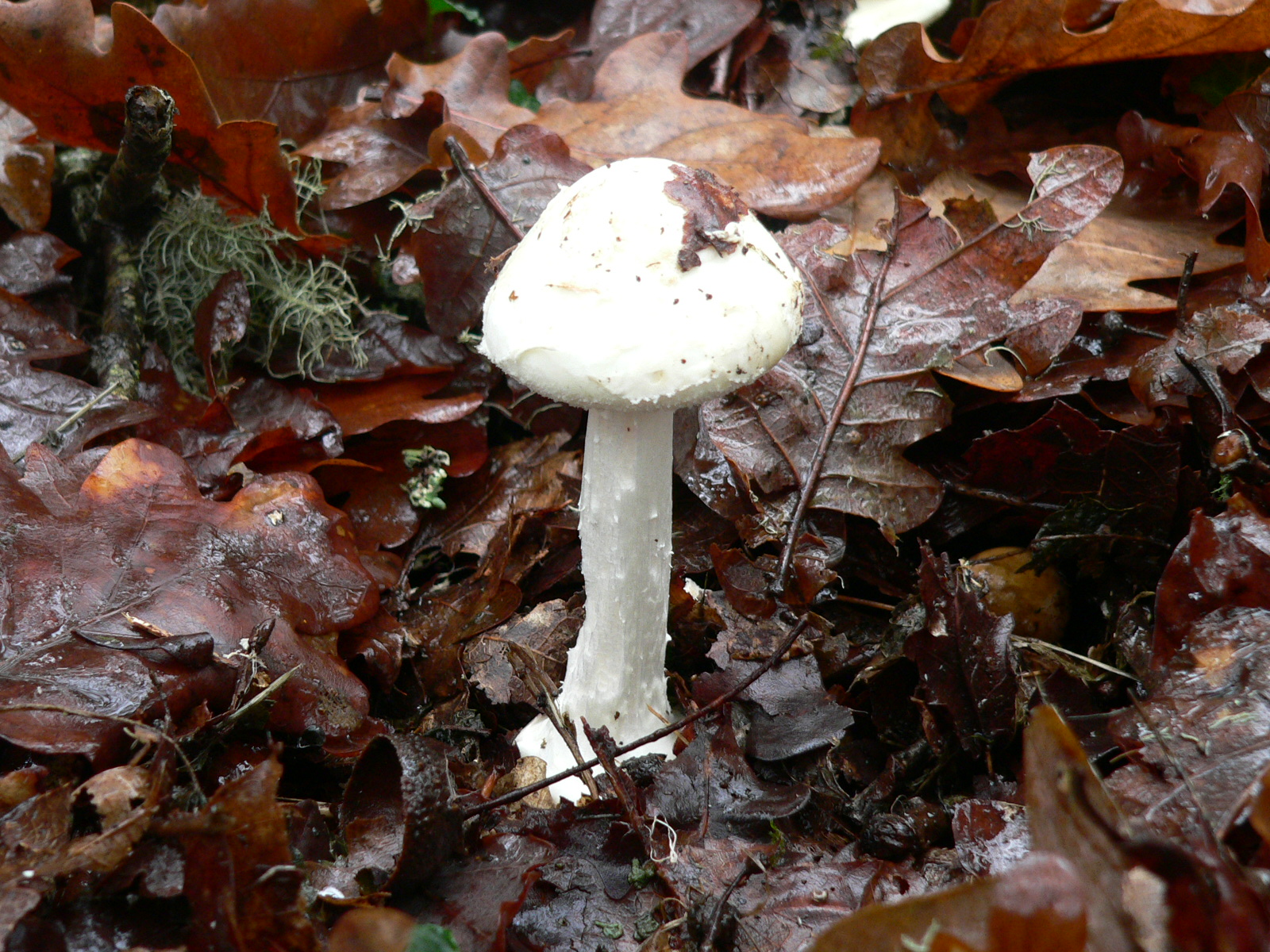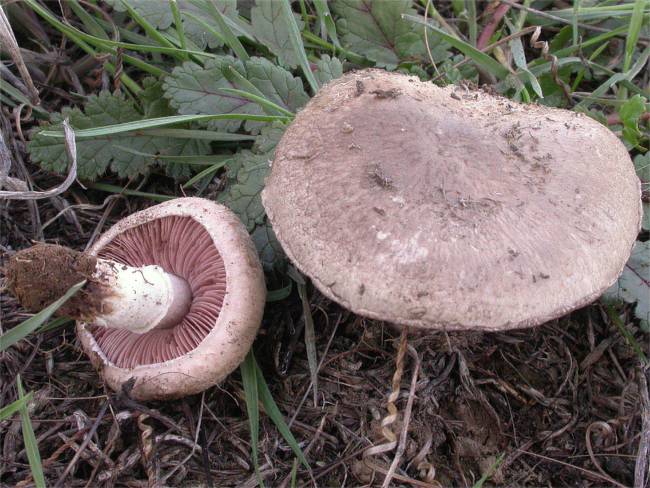|
Agaricus Amicosus
''Agaricus amicosus'' is a mushroom in the family Agaricaceae, found in high-elevation forests in the Rocky Mountains, and is particularly common in the Colorado Rockies. It occurs in deep leaf litter under spruce and fir Firs (''Abies'') are a genus of 48–56 species of evergreen coniferous trees in the family (biology), family Pinaceae. They are found on mountains throughout much of North America, North and Central America, Europe, Asia, and North Africa. The ... and fruits from late summer to early fall. It is considered a choice edible species. See also * List of ''Agaricus'' species References * Kerrigan RW. (1989). Studies in ''Agaricus'' IV: New species from Colorado. ''Mycotaxon'' 34:119-128. (pp120 [...More Info...] [...Related Items...] OR: [Wikipedia] [Google] [Baidu] |
Mushroom
A mushroom or toadstool is the fleshy, spore-bearing fruiting body of a fungus, typically produced above ground, on soil, or on its food source. ''Toadstool'' generally denotes one poisonous to humans. The standard for the name "mushroom" is the cultivated white button mushroom, ''Agaricus bisporus''; hence the word "mushroom" is most often applied to those fungi ( Basidiomycota, Agaricomycetes) that have a stem ( stipe), a cap ( pileus), and gills (lamellae, sing. lamella) on the underside of the cap. "Mushroom" also describes a variety of other gilled fungi, with or without stems, therefore the term is used to describe the fleshy fruiting bodies of some Ascomycota. These gills produce microscopic spores that help the fungus spread across the ground or its occupant surface. Forms deviating from the standard morphology usually have more specific names, such as "bolete", "puffball", "stinkhorn", and " morel", and gilled mushrooms themselves are often called "agarics" in refere ... [...More Info...] [...Related Items...] OR: [Wikipedia] [Google] [Baidu] |
Agaricaceae
The Agaricaceae are a family of basidiomycete fungi and include the genus ''Agaricus'', as well as basidiomycetes previously classified in the families Tulostomataceae, Lepiotaceae, and Lycoperdaceae. Taxonomy The family Agaricaceae was published by French botanist François Fulgis Chevallier in 1826. It is named after the type genus ''Agaricus'', originally circumscribed by Carl Linnaeus in his 1753 work ''Species Plantarum''. In his authoritative 1986 classification of the Agaricales, Rolf Singer divided the Agaricaceae into four tribes distinguished largely by spore color: ''Leucocoprineae'', ''Agariceae'', ''Lepioteae'', and ''Cystodermateae''. Genera once classified in the families Tulostomataceae, Battarreaceae, Lycoperdaceae, and Mycenastraceae have since been moved to the Agaricaceae based on molecular phylogenetics studies. According to a standard reference text, the Agaricaceae contains 85 genera and 1340 species. Description Agaricaceae species use a wide variety o ... [...More Info...] [...Related Items...] OR: [Wikipedia] [Google] [Baidu] |
Rocky Mountains
The Rocky Mountains, also known as the Rockies, are a major mountain range and the largest mountain system in North America. The Rocky Mountains stretch in straight-line distance from the northernmost part of western Canada, to New Mexico in the southwestern United States. Depending on differing definitions between Canada and the U.S., its northern terminus is located either in northern British Columbia's Terminal Range south of the Liard River and east of the Trench, or in the northeastern foothills of the Brooks Range/ British Mountains that face the Beaufort Sea coasts between the Canning River and the Firth River across the Alaska-Yukon border. Its southernmost point is near the Albuquerque area adjacent to the Rio Grande rift and north of the Sandia–Manzano Mountain Range. Being the easternmost portion of the North American Cordillera, the Rockies are distinct from the tectonically younger Cascade Range and Sierra Nevada, which both lie farther to its west. The ... [...More Info...] [...Related Items...] OR: [Wikipedia] [Google] [Baidu] |
Colorado Rockies (mountains)
The Southern Rocky Mountains are a major subregion of the Rocky Mountains of North America located in the southeastern portion of the U.S. state of Wyoming, the central and western portions of Colorado, the northern portion of New Mexico, and extreme eastern portions of Utah. The Southern Rocky Mountains are also commonly known as the Southern Rockies, and since the #Mountain peaks, highest peaks are located in the State of Colorado, they are sometimes known as the Colorado Rockies, although many important ranges and peaks rise in the other three states. The Southern Rockies include the highest mountain ranges of the Rocky Mountains and include all 30 of the Mountain peaks of the Rocky Mountains#Highest peaks, highest major peaks of the Rockies. The Southern Rocky Mountains are generally divided from the Western Rocky Mountains by the Green River (Colorado River), Green River and the Colorado River below the Green River. The Southern Rockies are divided from the Central Rocky ... [...More Info...] [...Related Items...] OR: [Wikipedia] [Google] [Baidu] |
Leaf Litter
Plant litter (also leaf litter, tree litter, soil litter, litterfall or duff) is dead plant material (such as leaves, bark, needles, twigs, and cladodes) that have fallen to the ground. This detritus or dead organic material and its constituent nutrients are added to the top layer of soil, commonly known as the litter layer or O horizon ("O" for "organic"). Litter is an important factor in ecosystem dynamics, as it is indicative of ecological productivity and may be useful in predicting regional nutrient cycling and soil fertility. Characteristics and variability Litterfall is characterized as fresh, undecomposed, and easily recognizable (by species and type) plant debris. This can be anything from leaves, cones, needles, twigs, bark, seeds/nuts, logs, or reproductive organs (e.g. the stamen of flowering plants). Items larger than 2 cm diameter are referred to as coarse litter, while anything smaller is referred to as fine litter or litter. The type of litterfall is ... [...More Info...] [...Related Items...] OR: [Wikipedia] [Google] [Baidu] |
Spruce
A spruce is a tree of the genus ''Picea'' (), a genus of about 35 species of coniferous evergreen trees in the family Pinaceae, found in the northern temperate and boreal (taiga) regions of the Earth. ''Picea'' is the sole genus in the subfamily Piceoideae. Spruces are large trees, from about 20 to 60 m (about 60–200 ft) tall when mature, and have whorled branches and conical form. They can be distinguished from other members of the pine family by their needles (leaves), which are four-sided and attached singly to small persistent peg-like structures (pulvini or sterigmata) on the branches, and by their cones (without any protruding bracts), which hang downwards after they are pollinated. The needles are shed when 4–10 years old, leaving the branches rough with the retained pegs. In other similar genera, the branches are fairly smooth. Spruce are used as food plants by the larvae of some Lepidoptera (moth and butterfly) species, such as the eastern spruce budwo ... [...More Info...] [...Related Items...] OR: [Wikipedia] [Google] [Baidu] |
List Of Agaricus Species
''Agaricus'' is a genus of mushrooms containing both edible and poisonous species, with over 400 members worldwide and possibly again as many disputed or newly-discovered species. The genus includes the common ("button") mushroom (''Agaricus bisporus'') and the field mushroom ('' A. campestris''), the dominant cultivated mushrooms of the West. Members of ''Agaricus'' are characterized by having a fleshy cap or pileus, from the underside of which grow a number of radiating plates or gills, on which are produced the naked spores. They are distinguished from other members of their family, Agaricaceae, by their chocolate-brown spores. Members of ''Agaricus'' also have a stem or stipe, which elevates it above the object on which the mushroom grows, or substrate, and a partial veil, which protects the developing gills and later forms a ring or annulus on the stalk. The genus contains the most widely consumed and best-known mushroom today, '' A. bisporus'', with '' A. arvensis'', ... [...More Info...] [...Related Items...] OR: [Wikipedia] [Google] [Baidu] |
Agaricus
''Agaricus'' is a genus of mushrooms containing both edible and poisonous species, with over 400 members worldwide and possibly again as many disputed or newly-discovered species. The genus includes the common ("button") mushroom (''Agaricus bisporus'') and the field mushroom ('' A. campestris''), the dominant cultivated mushrooms of the West. Members of ''Agaricus'' are characterized by having a fleshy cap or pileus, from the underside of which grow a number of radiating plates or gills, on which are produced the naked spores. They are distinguished from other members of their family, Agaricaceae, by their chocolate-brown spores. Members of ''Agaricus'' also have a stem or stipe, which elevates it above the object on which the mushroom grows, or substrate, and a partial veil, which protects the developing gills and later forms a ring or annulus on the stalk. The genus contains the most widely consumed and best-known mushroom today, '' A. bisporus'', with '' A. arvensis'', ... [...More Info...] [...Related Items...] OR: [Wikipedia] [Google] [Baidu] |
Fungi Of North America
A fungus ( : fungi or funguses) is any member of the group of eukaryotic organisms that includes microorganisms such as yeasts and molds, as well as the more familiar mushrooms. These organisms are classified as a kingdom, separately from the other eukaryotic kingdoms, which by one traditional classification include Plantae, Animalia, Protozoa, and Chromista. A characteristic that places fungi in a different kingdom from plants, bacteria, and some protists is chitin in their cell walls. Fungi, like animals, are heterotrophs; they acquire their food by absorbing dissolved molecules, typically by secreting digestive enzymes into their environment. Fungi do not photosynthesize. Growth is their means of mobility, except for spores (a few of which are flagellated), which may travel through the air or water. Fungi are the principal decomposers in ecological systems. These and other differences place fungi in a single group of related organisms, named the ''Eumycota'' (''true fungi' ... [...More Info...] [...Related Items...] OR: [Wikipedia] [Google] [Baidu] |
Edible Fungi
Edible mushrooms are the fleshy and edible fruit bodies of several species of macrofungi (fungi which bear fruiting structures that are large enough to be seen with the naked eye). They can appear either below ground (hypogeous) or above ground (epigeous) where they may be picked by hand. Edibility may be defined by criteria that include absence of poisonous effects on humans and desirable taste and aroma. Edible mushrooms are consumed for their nutritional and culinary value. Mushrooms, especially dried shiitake, are sources of umami flavor. Edible mushrooms include many fungal species that are either harvested wild or cultivated. Easily cultivated and common wild mushrooms are often available in markets, and those that are more difficult to obtain (such as the prized truffle, matsutake, and morel) may be collected on a smaller scale by private gatherers. Some preparations may render certain poisonous mushrooms fit for consumption. Before assuming that any wild mushroom is e ... [...More Info...] [...Related Items...] OR: [Wikipedia] [Google] [Baidu] |





